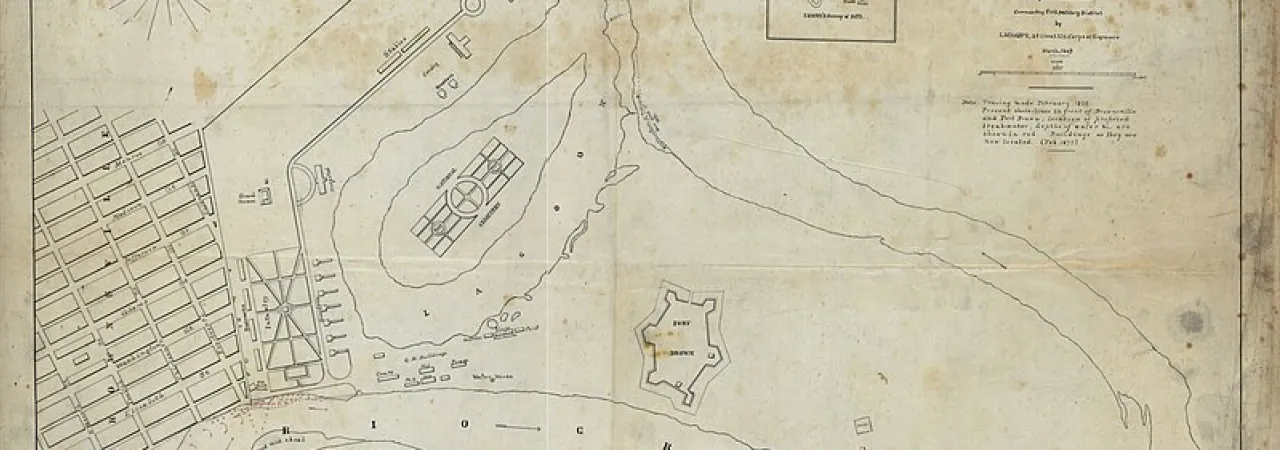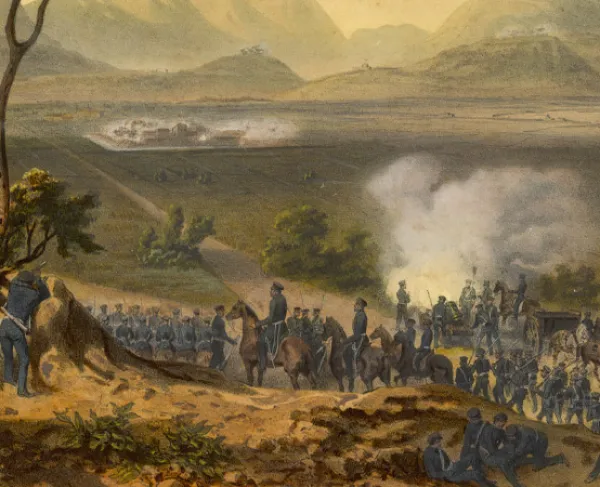Brownsville, TX | May 3, 1846
As a prelude to hostilities, both the United States and Mexico built defenses along the Rio Grande River. In response to the placement of Mexican batteries in Matamoras, Mexico, American troops constructed a six-sided earthwork on the opposite side of the river. Fort Texas, as it was dubbed, had walls 9 feet high and 15 feet wide, and a 20-foot wide by 8-foot deep moat.
As a much-larger Mexican force crossed the river upstream that led to the Thornton Affair, U.S. commander Zachary Taylor strengthened Fort Texas in anticipation of a siege. The American general then moved most of his command east (about 25 miles) to Point Isabel on the Gulf of Mexico to protect his supply line. Taylor left a compliment of 500 men at Fort Texas under the command of Major Jacob Brown. The fort’s defenses included four 18-pounders and a battery of 6-pounders.
At dawn on May 3, Mexicans opened an artillery barrage on the fort. American gunners responded and within thirty minutes silenced the Mexicans, disabling two of their guns. Once General Taylor heard the distant artillery fire, he sent a communique to Major Brown ordering him to defend the fort to the last man. When overall Mexican commander Major General Mariano Arista understood that most of Americans had left the fort, he ordered Major General Pedro de Ampudia with a force of 1,600 men to reduce Fort Texas while he pursued Taylor with the balance of his army.
The Mexican siege dragged on for several days with both sides resorting to desultory artillery fire that did little damage or caused few casualties. Once exception was Major Brown who was mortally wounded. Ampudia surrounded the fort but judged its defenses too strong and refused to order an infantry attack. On the fourth day of the siege, Ampudia demanded the American surrender. Captain Edward S. Hawkins, Brown’s successor, responded, “My interpreter is not skilled in your language, but if I understand you correctly, I must respectfully decline to surrender.” Hawkins’ bravado reflected the strength of his position to withstand a short siege.
On May 7 Taylor left Point Isabel to relieve Fort Texas. General Arista responded by recalling Ampudia’s brigade and blocking Taylor’s march. The next day the two armies squared off on the road to Matamoros. On the afternoon of May 9, Americans at Fort Texas watched as fleeing Mexican soldiers crossed the Rio Grande (many drowning) following the American victories at Palo Alto and Resaca de la Palma.
Major Brown’s death led his men to rename the fort in his honor. Fort Brown remained an active U.S. Army post through World War II. Gradual erosion and bulldozing of the site during the 1950s to build a river levee left little of the original earthen walls.
Related Battles
500
1,600
10
4


